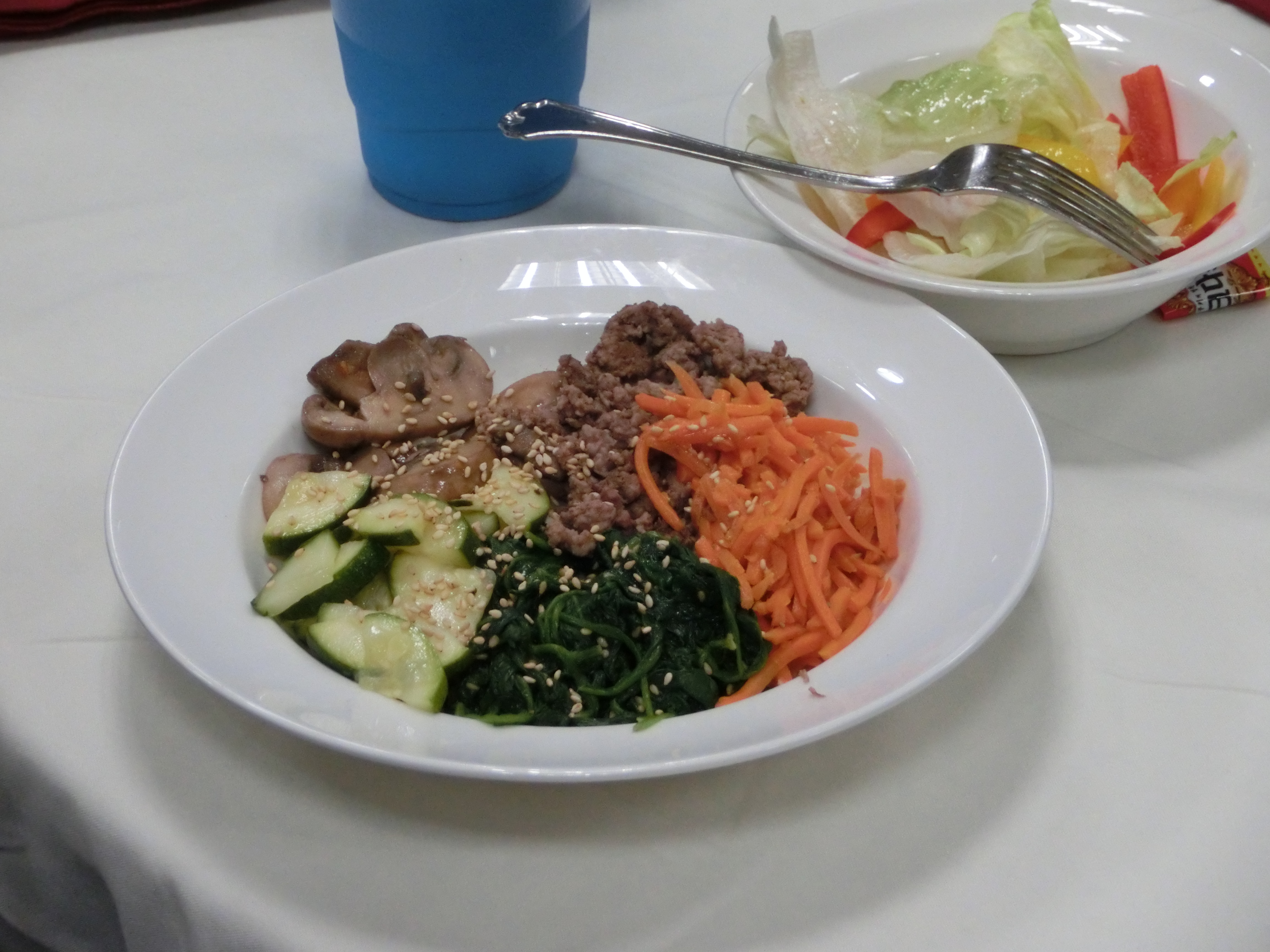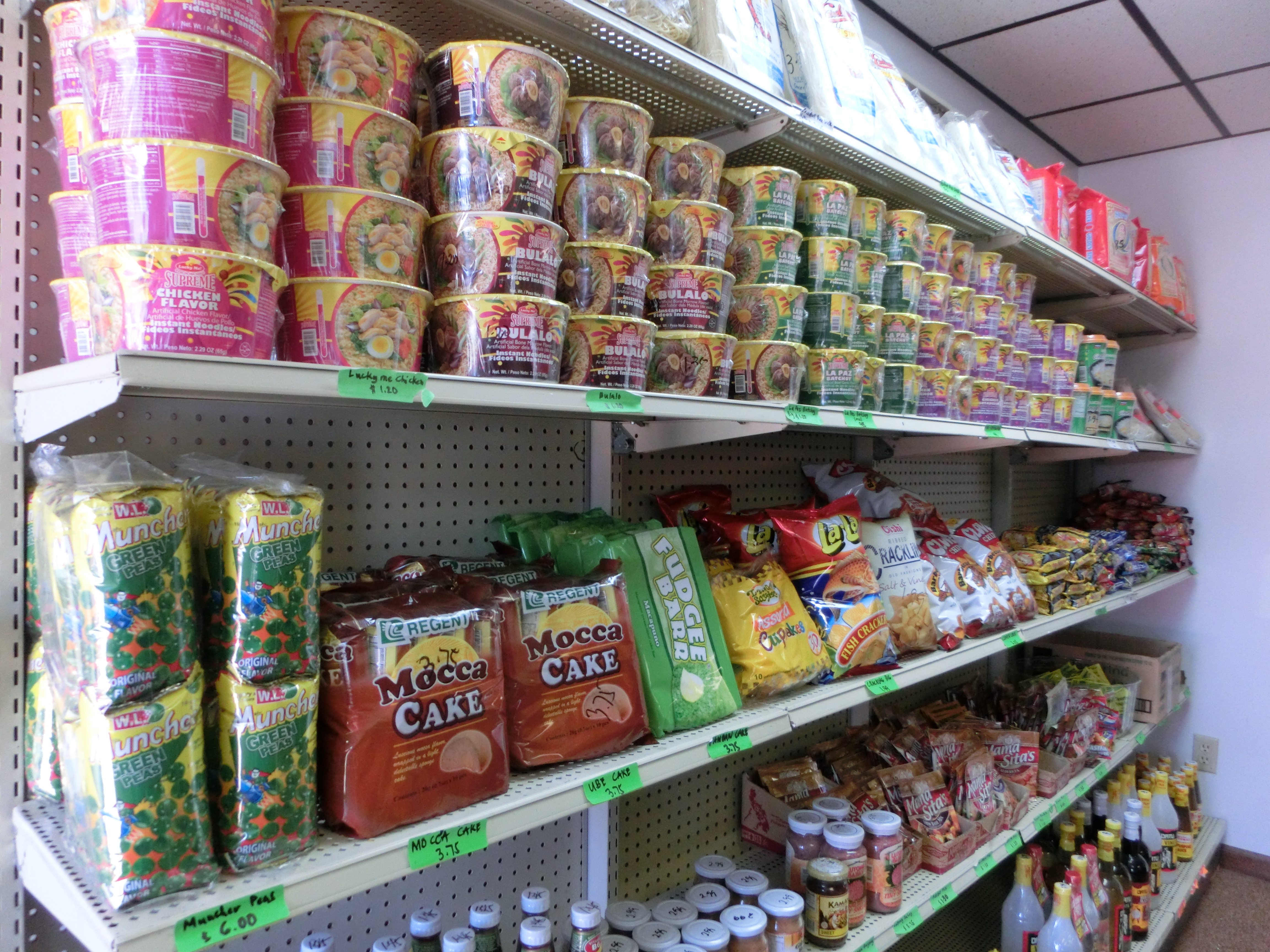
The Korean American Student Association (KASA) shared the cuisine of Korea with the first Korean Restaurant during October, and their preparation offers insight into the difficulties of international cooking in a small town.
KASA, which formed during spring 2015, offered a free traditional Korean dinner the evening of Sunday Oct. 11 in the Student Union Building. KASA members served guests a three-course meal while also presenting Korean trivia, offering a photo booth with Korean props, and parading traditional Korean clothing.

Sharing food is a common theme among multicultural student events, says Carol Bennett, Assistant Dean of Multicultural Affairs Center.
“Food is always that staple,” Bennett says. “Its really interesting to hear the stories of how they prepare food … you can connect with people that way.”
For the Korean Restaurant, Students in KASA did all the cooking. Because of the specific nature of Korean ingredients, they had to drive to Columbia to purchase the authentic ingredients, says Yun Jin Choi, President of KASA.
The ability to cook traditional meals with traditional ingredients, whether for special events or daily meals, holds significance for international students who haven’t eaten their native cuisines in a long time.
“The raw ingredients you can find, but the spices it’s not the same, so you cannot get the real, authentic taste of Vietnamese food,” says Hien Ngyuen, a junior from Vietnam. “I think the most important part is we are far away from home and we miss the taste, so we try to have something close to that food.”
For international cooking in Kirksville, niche markets like Gemma’s Market and the African Food Store fill the gap left by larger grocers. Gemma’s Market, owned by Dan and Gemma Longerger, stocks its shelves with Filipino, Korean, Vietnamese, Thai and Chinese products, from noodles to meat to spices. If customers desire a product not currently stocked, Gemma’s Market can order it, Gemma Lonberger says.
“I’m concerned about the students also because I know their feeling that they need to eat some of their product here,” Gemma Lonberger says. “ I felt that when I came here in 2008, I needed to eat some of my dishes. I’m very happy for that to help them.”
Chain grocery stores offer varying degrees of the availability of international ingredients. Wal-Mart product selection is made at the national level, according to their website. Hy Vee has more autonomy to stock the products they feel are the most beneficial for their community, Hy Vee Manager Scott Johnson says. Customers also can make requests at Hy Vee to see certain products in the store.
“The largest percentage of people that ask for items are on a local basis,” Johnson says. “As far as international items, we don’t get a lot [of requests] from that. If someone comes and asks for one specific item and I bring in one specific item, my mainstream customers don’t shop for that kind of item. If people want international foods, they generally want a wide variety.”
When Kirksville grocers aren’t enough, students leave Kirksville to buy ingredients for daily food preparation. Ryo Matsuda, a junior from Japan, goes out of her way to find real Japanese ingredients.
“For making Japanese food, I need some spices, and even soy sauce tastes different from Japanese ones,” Ryo says. “There’s a big Asian market in Kansas City and that’s the only store that has Japanese foods. I’ve been there with my friends a couple of times. I got most of [my] spices from there. I go there once or twice or semester.”

President of KASA Yun Jin Choi says he wanted students to walk away from the Korean Restaurant event with an interest in Korean culture and cuisine.
“[Our dishes] have a lot of variations, compared to other countries, which I think is what differentiates Korean cuisine,” Choi says. “One dish has different variations depending on the provinces. Let’s say kimchi, which is the most famous Korean dish, there are at least 30-40 different variations … and that applies to all of the dishes. Every dish has different variations, at least 20 or 30. It varies in style of cooking, ingredients that you use, and how they cook it.”
KASA was able to host this event after becoming an official campus organization and receiving funds from the Funds Allocation Council. The funds also allowed the group to make the event free. KASA hopes to continue to provide the meal for free, Choi says.
